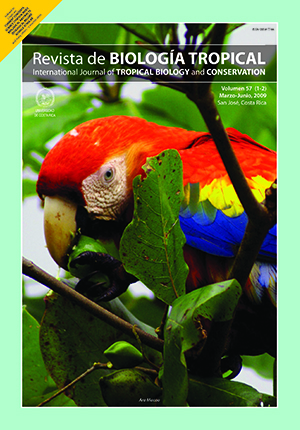Abstract
We studied the wood anatomy of 29 species belonging to 10 genera of the tribe Detarieae, subfamily Caesalpinioideae and compare them with tribe Caesalpinieae. Detarieae is the largest of four tribes of Caesalpinioideae, with 84 genera, only eleven occur in Venezuela with species of timber importance. The specimens were collected in Venezuela and include wood samples from the collection of the Laboratorio de Anatomía de Maderas de la Facultad de Ciencias Forestales y Ambientales de la Universidad de Los Andes, Venezuela, and of the Forest Products Laboratory of the USDA Forest Service in Madison, Wisconsin, USA. The terminology and methodology used followed the IAWA List of Microscopic Features for Hardwood Identification of the IAWA Committee, 1989. Measurements from each specimen were averaged (vessel diameters, vessel element lengths, intervessels pit size, fibre lengths and ray height). The species of Detarieae can be separated using a combination of diagnostic features. Wood characters that provide the most important diagnosis and may be used in systematics of Detarieae include: intercellular axial canals, rays heterocellular, rays exclusively or predomi- nantly uniseriate, prismatic crystals common in ray cells, irregular storied structure and fibre wall thickness. For comparative anatomy between Detarieae and Caesalpinieae: intercellular axial canals, heterocellular rays, rays exclusively or predominantly uniseriate, prismatic crystals common in ray cells (in Detarieae) and regular storied structure, fibres septate, fibre wall thick or very thick, rays homocellular, multiseriate rays and silica bodies (in Caesalpinieae). Axial parenchyma is typically a good diagnostic feature for Leguminosae, but not for Detarieae and Caesalpinieae comparisons.Comments

This work is licensed under a Creative Commons Attribution 4.0 International License.
Copyright (c) 2009 Revista de Biología Tropical
Downloads
Download data is not yet available.






